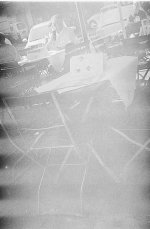Time for doing a TEST.
A darkroom is a lab, meaning a place enabling you to obtain the same results provided you accurately repeat the same proceedings.
You may have read or heard that BW processing is easy and forgiving. What you may have not is the other missing part of the sentence, that should read "compared to color processing", which is extremely difficult, unless you have enough money to afford the means of controling temperature and time at high accuracy. With this I mean that BW home processing is to be performed at our best capability and rigorous discipline for detail.
Since you say the former 9 rolls were ok, shoot a roll of 36 frames repeating the same pic, but process only the firts quarter of roll. The remaining 3/4 will be kept for further processing.
The first test/processing will be done the same way you have done previously.
There is a good chance that at your first try you yourself will discover what went wrong last time.
In case, and it happens, that your first try goes ok but you do not understand why, then just forget about what happened last time. Sometimes due to a stupid problem, we can go crazy in the search of the source.
After the first test, if the problem continues and you have several suspictions, CHANGE YOUR PROCEEDINGS BY ONCE PER TRY. Obviously if you input three changes at the same time you'll never know where the problem comes from.
Take note of the following:
- After closing the lights for loading the film into the reels, wait 30 seconds to measure "enough safe darkness". At the end of this 30 seconds, you should not detect any light around. Obviously, with more time, your eye will detect light spills, but they don't matter if they do not appear at the first 30 seconds.
-Agitation, must be rigorously the same for ever, and for all films, no matter what is written at the film prescriptions, or what scandals you may hear at this thread upon this assertion. If yours is too strong, or uneven, or not at the same repeated space of time, you will correct it until your negatives will tell you you are doing good. Once you find a good agitation, repeat it forever, and for all films.
-The temperature of the washing and fixing baths must not differ more than 2 celcius centigrades from that of the developer. Otherwise film will turn ugly grainy. Besides the strikes at your neg, in general it looks underexposed or underdeveloped, or both, plus affected by processing changes of temperature.
And as Cale mentions above, either the developer or fixer or both may be exhausted. Exhaustion occurs not only by time but also by exposure to air and light. Yet all of these may be just the impression left by the scanning.
Cheers,
Ruben


